—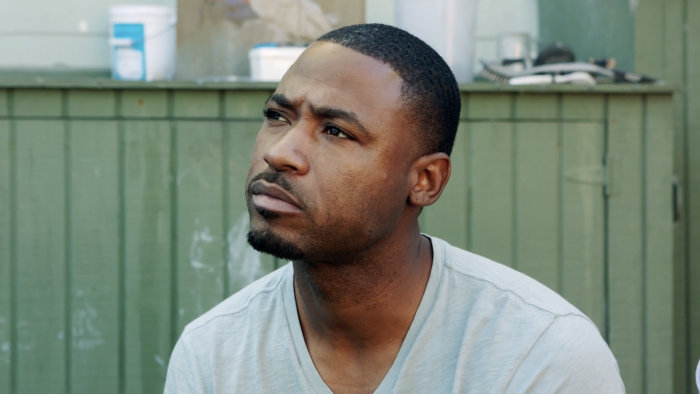
This post is written in partnership with The Crip Who Loves Yoga, a film in which every person in and involved in the making of the film is unified in yoga and believes in its power to heal and restore—especially when it comes to social (in)justice. When you watch this film, you become the change by telling television networks that this needs to be seen by larger audiences. We’re honored to support this cause and hope you will, too. ~Marisa, ed.
“I became a child I hated, with no response to conflict except violence.”
Those are the words of neglected child turned troubled foster youth turned armed robber and repeat offender, Jarvis Jay Masters.
His past might sound tumultuous at the least, but his present is much more grounded. He is a widely published African American Buddhist writer—and he’s on death row, awaiting execution at San Quentin State Prison.
And while one might assume that Jarvis’s turn-around, his coming to balance through Buddhism and finding a way to benefit society even from behind prison bars is the exception to the rule. But it’s not.
That’s what award-winning director and photographer, James Wvinner, aims to show in his pull-on-your-heart-strings documentary, “The Crip Who Loves Yoga.”
The documentary follows two men, Ebay Williams and Curtis Mark Foster, each in their own respective hero’s journey, as they describe how yoga became a tool for them to cope with incarceration, the criminal justice system, and their fight against the odds of oppression and racism.
As I watched story after story unravel in “The Crip Who Loves Yoga,” I came to see yoga and so many of its branches come alive—from the healing power of uniting body and mind to taking it out into the community and giving back.
Watch “The Crip Who Loves Yoga” & help propel the film into the world and onto television >>
That’s something that author, yoga teacher, and therapist Sarajoy Marsh says is clearly displayed when she teaches yoga to her prison inmates.
“When I’m teaching and I offer people to be of service and do some kind of karma yoga,” Marsh says in “The Crip Who Loves Yoga, “something within them lights up that they have a place to make a contribution—to know that their presence matters. This is even the case with our adults in custody.”
So, she says, she often tells them:
And it struck me how that actually applies to all of us humans. Because whether our prison consists of flesh and a busy mind, or concrete and steel bars, it’s important that we practice yoga (coming together) wherever we are in life.
And so awake I was, after watching this documentary—awake and inspired.
I just kept getting pulled deeper and deeper into the entertaining and sweet personalities of these two individuals and other experts as they attested to the restorative power of yoga and other mindfulness practices that are missing from (but so desperately needed in) our so-called “justice system.”
Help get the world talking about yoga in prison. Watch “The Crip Who Loves Yoga” >>
Tales from the Crip
I’ll never forget the first few times I was sent out into South Los Angeles on an exploratory mission for a journalism class. I’d long associated the area with danger and had avoided even stopping for gas in “that part of town” if I needed it.
That all began to shift when I found myself chatting with five Black men wearing the tell-tale blue of the Crip, just chilling outside a 7-Eleven market.
After a few moments of me being a bad journalist asking way too common questions about the neighborhood, one of the guys (he was gorgeous) asked me for my number. I respectfully declined, and in return, his friends gave him hell.
I was blown away by their humanity as I walked away feeling perfectly safe and even a little flustered—complimented, even—by the come-on. So, when in Wvinner’s documentary, Paul Eckstein, writer and producer of “Narcos: The Godfather of Harlem,” and one of Ebay Williams’ Venice, California neighbors said,
…that rang absolutely true for me.
As my colleague Kate said when chatting about our thoughts on “The Crip Who Loves Yoga,” what really hits home when watching this film is the idea that…
We’re never stuck in a box as one “thing.”
Here are a few quick facts about our (in)justice system:
>> The US has 25 percent of the world’s incarcerated.
>> 2.4 million people are incarcerated in the US.
>> Another 5 million are on parole or probation.
>> There are 7 million in the US penal system
And if that many people are incarcerated, on parole or probation, or in the penal system, think of how many of us know or love someone who’s served or is serving some time.
Watch the healing power of yoga come to life & let your view tell TV networks this film needs to be seen >>
Despite that it seems our justice system might like to shove our people into one “thing” box and seal it tight (it’s a profitable system, with the largest private prison company (CCA) having seen its revenue grow by 500 percent in two decades, and $80 billion US tax dollars being spent on incarceration every fiscal year), we’re not “bad” people.
There is always an opportunity to take our metaphorical lens further out to see the full picture—to grow, heal, or make a difference.
That’s Ebay’s story. And it (and others like it) should be on the top of our minds not only for the benefit of our own personal growth, but for the growth of American society as a whole.
From “Driveby” to Down Dog
Today, Ebay works for the H.E.L.P.E.R Foundation, which helps men apply for and get jobs to avoid the economic depravity in our overlooked neighborhoods. But not long before he joined H.E.L.P.E.R, his role in his community was quite different.
Ebay grew up playing “drive-by” as a young boy, and admiring the same kind of men I ran into at 7-Eleven that day. Men who had cool names, looked out for their people, and were plain ol’ humans until, by “necessity,” they became a protective warrior in their streets.
When we grow up admiring someone and coming to have a sense of safety associated with that person, it’s easy to begin emulating them—particularly when that way of being is the norm in our world.
So Ebay ended up following in the footsteps of his cousins. He entered into the Shoreline Crip, and in doing so, he also entered into an almost constant toggling between what those familiar with the system call “the inside” and “the outside.” He’d be out of jail for 20, 40, 60 days, then head right back in.
Let your voice amplify someone else’s. Watch “The Crip Who Loves Yoga” now >>
That is, until somatic therapist and yoga teacher, Hala Khouri’s invitation to yoga (and learning that the neighborhood ladies would be there) changed the course of his life.
According to Khouri, Ebay was a natural. And he felt it, too. Well, sort of.
“I thought I was gonna be there just to look at the women and stuff like that. I was like, ‘This is nothin’ but stretchin’.’ After five minutes, I was shaking like a mini bike and lookin’ around and I said, ‘Shit, these women are stronger than me right here!” ~Ebay Williams
What you’ll discover about Ebay in “The Crip Who Loves Yoga” is that he’s an absolutely charming man with an endearing smile and quite the sense of humor. He’s also, as Khoury noted, curious—a trait that tends to lend itself well to personal growth if we seek it.
So, before long, Ebay was hooked—not to mention determined to get more of the people he was closest to involved. And that’s what he was doing when he was arrested for violating gang injunction, or associating too closely with another gang member while on parole.
The fact that he was arrested when trying to help his community members (albeit cousins and fellow Crips) was almost too much for Ebay to take.
While serving five months in lockdown before finally seeing the literal light of day, full of frustration, Ebay did the only thing he could think to do to keep sane and centered: he did yoga—even with people across the block watching.
The restorative power of yoga is something that Avenues for Justice, a rehabilitative facility for youth, can attest to.
Watch the restorative power of yoga come to life. Buy your ticket to view “The Crip Who Loves Yoga” >>
If a youth enters the penal system, there is an 80 percent chance he or she will return to prison as an adult. But if that youth gets into Avenues for Justice, where yoga and other wellness and life skills are taught in an effort to help ground and center the youth populations most at-risk of committing crimes, there is only a 10 percent chance they will re-offend.
The healing power of yoga when directly applied to life on the inside is echoed by Curtis Mark Foster, a Native American man who served several years in prison for bank robbery and other self-admitted crimes. That’s where he met Wvinner, who was teaching yoga to inmates at the time, and things began to shift.
From Swastikas to Mandalas
Two years into his teaching yoga at Terminal Island, Wvinner had been all but forgotten in the general prison population when Curtis approached Wvinner with a forearm handshake that let everyone around the pair know that they were bros—a sign of unity in a place where that can often be hard to come by.
Raised on a reservation, Curtis says he didn’t have access to much opportunity. So, he sought easy money through selling dope.
Yoga showed him that there was something more for him—not out there, but deep within. Something far more reliable than quick cash and temporary highs.
Watch & Learn the importance of doing ‘yoga on the inside.’ Buy your ticket today >>
“There’s so many things that yoga opened up at a time when I needed it. Instead of being locked in my mind and having a plan where everything was so strict, I was able to actually release a little bit and grow spiritually—even more so because if you find your body and you can be at peace with it, it’s an inner peace that nobody can take from you.” ~ Curtis Mark Foster, Drug & Alcohol Counselor
And so those swastikas on his skin? They turned into mandalas. He’s got 20 years of sobriety under his belt and has been out of the penal system for just as long. He now runs a spirituality-centered recovery program.
The feelings of hope, inspiration, and information that come from watching “The Crip Who Loves Yoga” are that of a slow burn. When we watch, we at first take it all in. But as the words of experts ring in our ears, there’s a warmth and an increased faith in humanity that spreads through our being.
The breadth of the film’s teachings is wide, but here are a few of my favorite lessons that I hope you’ll take with you after watching and falling just a little bit in love with Ebay, the Crip who loves yoga, and the others like him featured in the film.
3 Powerful Life Lessons from The Crip
1. Yoga is “gangsta”—and we should all be a little gangsta.
The word yoga literally means to yoke, or bring together. And at their heart, gangs are actually formed for the same reason, albeit from a different source.
Perhaps oversimplified, gangs were formed by community members out of a necessity to protect those within the community from injustice and crime. In that sense, gangs seek to increase community, and can offer a temporary sense of safety within a group—a form of unity and togetherness.
But you know what’s really gangsta in that sense? Yoga.
Let the Crip who loves yoga show you how yoga can be “gangsta”—in a good way >>
Yoga can offer us true safety and security within ourselves through establishing unity between our body and mind. We need that sort of grounding within ourselves if we wish to be of any true benefit to the world.
2. Our inherent goodness is just one breath away.
When he described his time in prison, Ebay expressed a desire for a return to his inherent goodness when he realized he needed to do yoga to maintain a sense of calm during solitary confinement.
Later in the documentary, he repeatedly mentions that despite prison politics which required he interact only with other Black prisoners to ensure his safety and wellbeing within prison in-groups, he wanted to be able to show all other interested prisoners how to do yoga.
As he continued strengthening his own practice, he persevered in eventually earning the opportunity to officially teach yoga classes within the prison, which allowed him to give that gift to all fellow prisoners indiscriminately.
With the first breath and asana he took in his cell, Ebay returned to his inherent goodness and with each breath after that, drew nearer and nearer to it. We can all do the same if we show the same dedication to ourselves and our passions.
Tap into your inherent goodness (& feel-good vibes). Watch “The Crip Who Loves Yoga” >>
3. There’s immense potential in even the hardest of things.
Watching “The Crip Who Loves Yoga,” I was struck by the resilience of humans when given the opportunity to connect with themselves and community through yoga—or any form of mindfulness, really.
Hearing the stories of multiple former criminals speaking of how they overcame even the most difficult of circumstances through breathwork and going within caused me to take a look within myself, at my life, and into how I handle what are often rather small conflicts and problems.
If we allow ourselves to see hardness and difficulty (whether in people or in situations) as a blank canvas for growth, if we transform our relationship with tough circumstances and people from one of dread, burden, and avoidance to one of opportunity to connect, we unlock a treasure trove of growth potential.
See the world of yoga & the streets anew: watch “The Crip Who Loves Yoga.” >>
The World Needs Us.
In speaking of her experience of teaching yoga in prisons for 22 years, Marsh explains that there is nothing broken or irreparable in any one of us.
Instead, she points out that so often, we expect ourselves and others to heal, recover, or grow stronger independently. We have this idea in the US that we’ll get better if we just have enough self-will, and if we’re just disciplined enough. So we send people to prison when they commit a crime and tell them to get better in a cell all by themselves.
That’s the opposite of what we need.
According to Marsh, “It has never been a question of self-will to get better from anything.” In fact, the word self, she says, is problematic in that sentence, as is the word will, because we need people and interaction in order to experience our brains fully connecting.
We can’t just will ourselves into new ways of being; we have to learn them from others if we hope to cultivate any interpersonal resources so that we can not only survive, but thrive in life.
And I think that’s a really appropriate note to end on, because if we’re going to fix our broken (in)justice system, we can’t rely on a million one-man armies. We need the very thing that yoga means—to yoke, to come together. We need not self, but us.

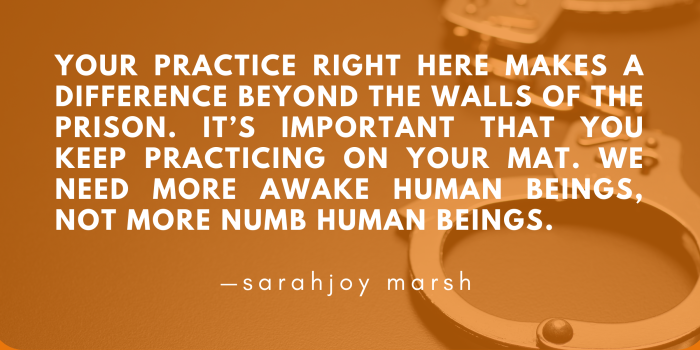
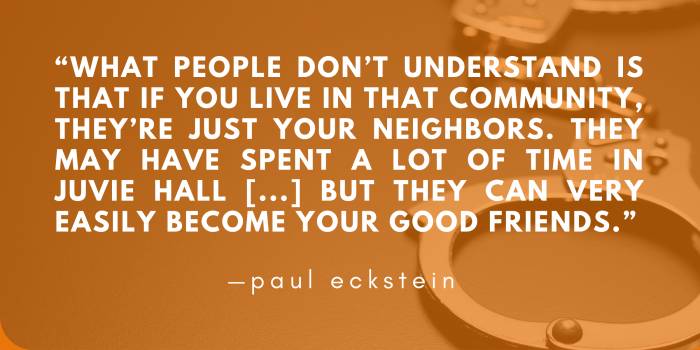

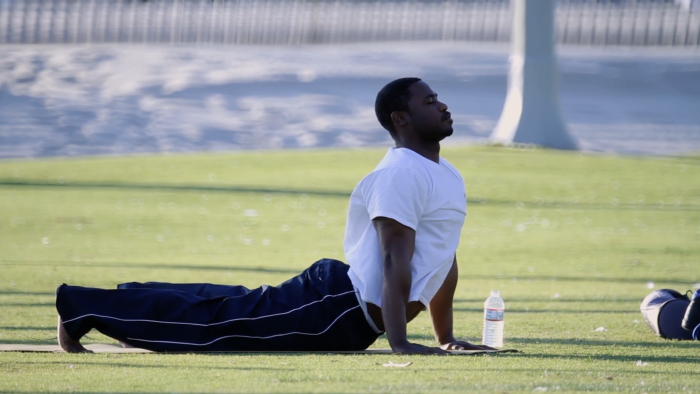
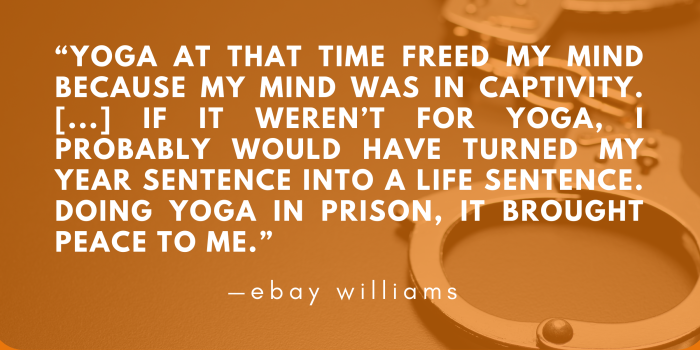
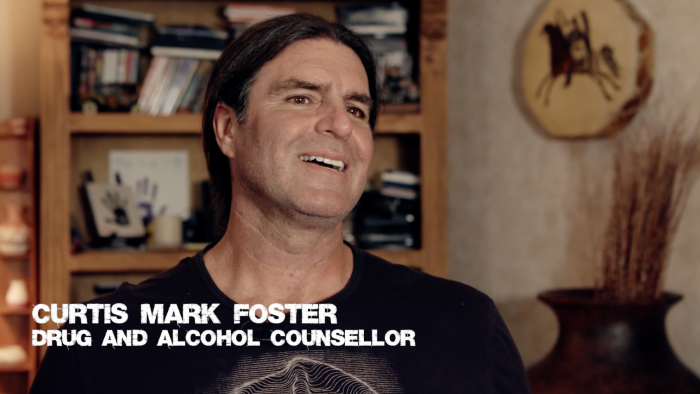
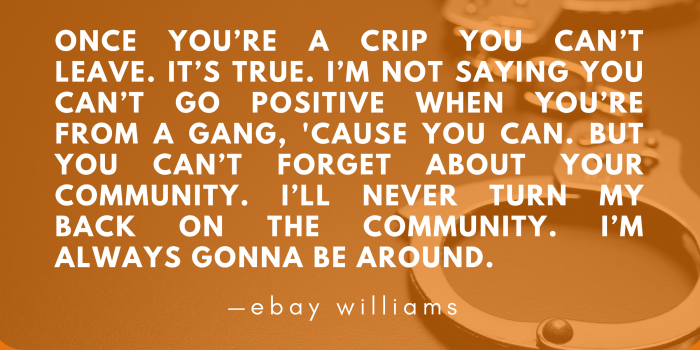
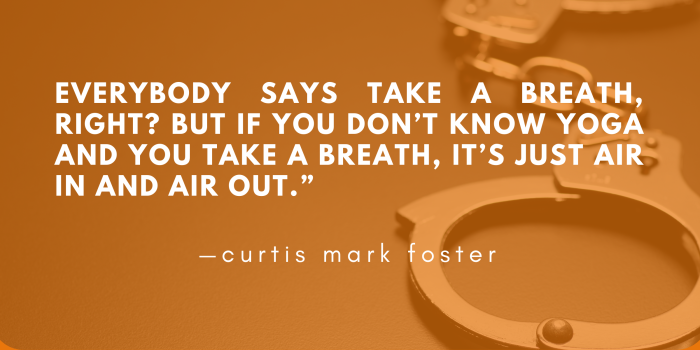
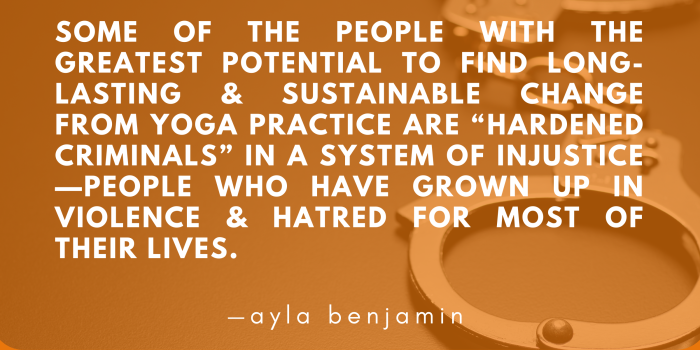
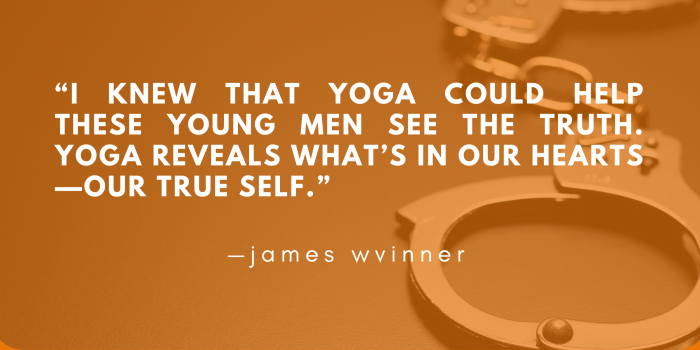

Read 4 comments and reply